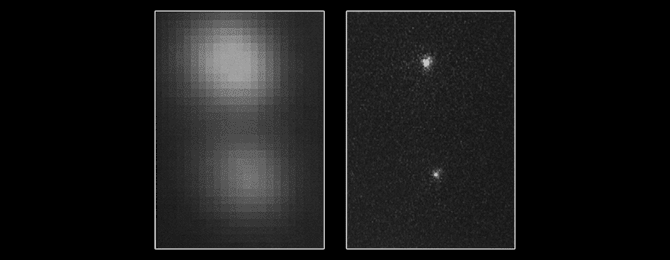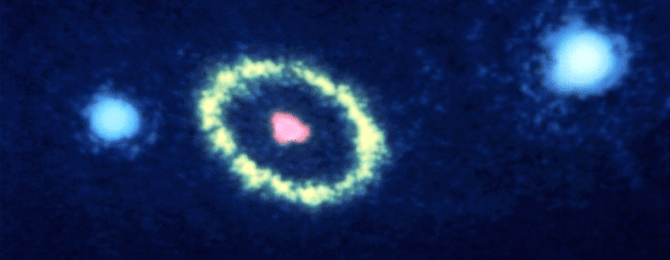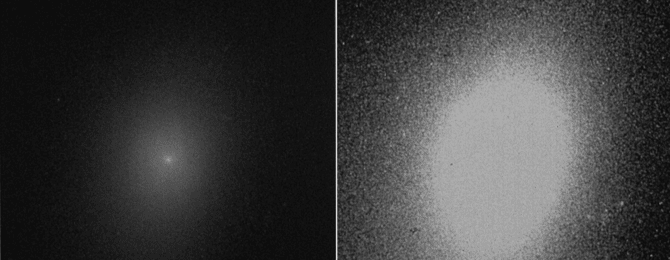Hubble Observes Exoplanet that Snows Sunscreen
Travelers to the nightside of exoplanet Kepler-13Ab should pack an umbrella because they will be pelted with precipitation. But it's not the kind of watery precipitation that falls on Earth. On this alien world, the precipitation is in the form of sunscreen.
Ironically, the sunscreen (titanium dioxide) is not needed on this side of the planet because it never receives any sunlight. But bottling up some sunlight protection is a good idea if travelers plan on visiting the sizzling hot, permanent dayside, which always faces its star. Visitors won't find any desperately needed sunscreen on this part of the planet.
Astronomers didn't detect the titanium dioxide directly. They used Hubble to find that the atmospheric temperature grows increasingly colder with altitude on the dayside of Kepler-13Ab, which was contrary to what they had expected. On this super-hot dayside, titanium dioxide should exist as a gas, called titanium oxide. If titanium oxide were present in the daytime atmosphere, it would absorb light and heat the upper atmosphere. Instead, high winds carry the titanium oxide around to the permanently dark side of the planet where it condenses to form clouds and precipitation, and rains down as titanium dioxide. The planet's crushing gravity pulls all the titanium dioxide so far down it can't be recycled back into the upper atmosphere on the daytime side.
The Hubble observations represent the first time astronomers have detected this precipitation process, called a "cold trap," on an exoplanet.
Kepler-13Ab is one of the hottest known planets, with a dayside temperature of nearly 5,000 degrees Fahrenheit. The Kepler-13 system resides 1,730 light-years from Earth.
(More at HubbleSite.com)















